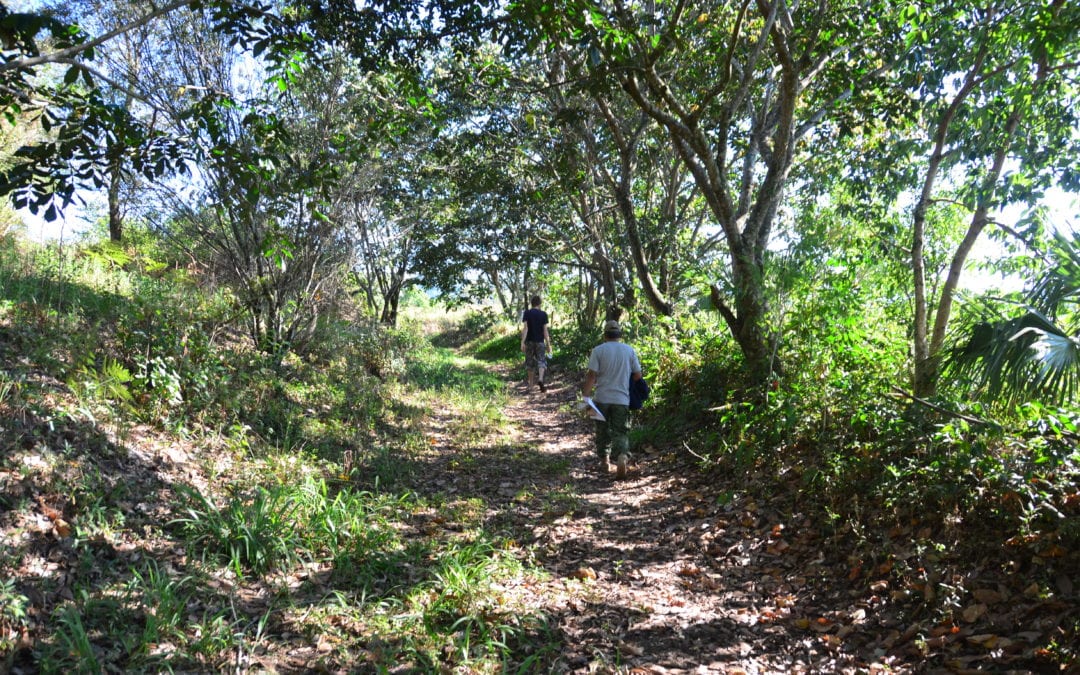We started the morning with a visit to our proposed sites for the design project portion of the permaculture course. Instead of there being a fictitious scenario, we are designing a number of different sites around Zaytuna Farm that tie into the future vision of the site. The idea is that the Permaculture Research Institute wants to build more of a community on the farm and they’ve toyed with this idea of developing parts of the property for this purpose. Each group was assigned a different part of the property and our aim is to design it for a family to be able to live self-sufficiently off that piece of land. We spent the morning with our groups, walking around each of our respective properties, understanding what we have to work and brainstorming ideas. It’s time to really put what we’ve learned to the test and see if we’re able to effectively apply permaculture principles and use the techniques we’ve learned to design with the flow nature.
Upon returning to class we refreshed a few high level things to keep in mind for the design process. Designing from patterns to details is essential. First, get all of the components and their beneficial relationships sorted based on the nature of the landscape and then go into the details of specific features and plant species to be used. Three points that have been harped on in many forms throughout this course are: water, access and structures. These three buckets provide a framework to aide in building integrated systems.
We moved into discussing design for the humid tropics. This climate is where the rainforests live in our world and where all those yummy tropical fruits come from. Much of the organic matter in the region is actually present in the trees and animals of the region, not in the soil. GASP! I know, I’ve said soil is the foundation of everything a few times, but in this region the high heat and continuous rainfall leech nutrients in the soil and there’s rampant erosion. Termites and ants are very active in helping manage the soil and it’s these invertebrates that step up on the rainforest floor to take on some of the jobs that soil microbes would normally carry out. Good permaculture designs for this region manage excess water and curb erosion using trees and ground covers. Things don’t stop growing in the humid tropics, there’s a yearlong growth cycle and everything grows super-fast. Curiously, this can also be a challenge because overgrowth of a landscape can be detrimental to obtaining a productive yield. Designing for the humid tropics isn’t nearly as constraining as in the dry lands, but there are some considerations here I never would have thought were design constraints.
We also spent time getting into a discussion about aquaculture. The stability and productivity of aquaculture systems have been tested for centuries and they are superior to the productive of a terrestrial agriculture. We can expect 4-20 times the yield from an aquaculture pond than from it’s adjoining land. This is because water supply is constant for plant and animal growth and plant nutrients are readily and abundantly available in soluble forms. Additionally, water organisms don’t use nearly as much energy for movement, so their energy is more dedicated to growth.
We talked a little bit about aquaponic systems which create a symbiotic relationship between plants and fish; a marriage between hydroponics and aquaculture. The way it works is that fish poop in the water and this poop has tons of nitrate in it. The nitrates are converted into nitrates by water-borne microorganisms and this becomes bioavailable for plants to be sucked up. There is no soil involved in this process, the plant roots are suspended in the water and they just drink up everything they need straight from the water. You get to harvest greens and vegetables from the grow beds on a regular basis and you even get to harvest the fish. This system has proven to be extremely productive and especially fit for urban environments where you might not have much land to work with.
I’m continually blown away by the sheer ingenuity and quantity of real solutions we have today for self-sufficiency.

